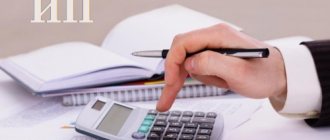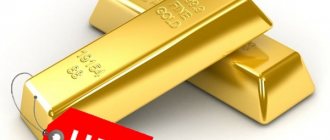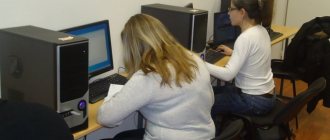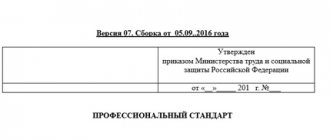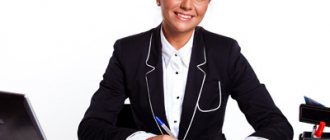All enterprises, including those under special tax regimes, must submit accounting reporting forms to the tax authority. One of the main forms is balance, consisting of two parts, active and passive.
The active part of the balance sheet contains information about the balance of the organization’s property, and the liability side records the company’s obligations. We will try to answer the question: “What is a balance sheet asset?” In addition, we will present a line-by-line breakdown of the active part of the balance sheet, and also give a brief description of it.
The asset is presented in the balance sheet in two parts
Fixed assets
This part includes the amount of the value of assets in the context of accounting accounts classified as non-current assets.
Current assets
This section shows the value of property that is constantly changing - the balance on the current account, the balance of materials in production, balances in warehouses, goods, debt to the organization. Indicators for all sections are reflected in the analytics for the last three years, including the reporting period. It should be taken into account that when providing reporting to counterparties, at their request, you can quite easily find out and analyze the organization’s availability of material and technical resources, and assess its financial viability. For this reason, the formation of indicators must be approached with full responsibility.
The assets of the balance sheet reflect the following accounts that have a debit balance of the accounting accounts as of the calendar date.
Buyers' debt
This term can apply to both individuals and legal entities. Accounting for all transactions that occur when a company tries to sell/buy a product or service must be kept in accordance with accounting rules. Therefore, it is extremely important that the calculations are carried out not just by a qualified specialist, but also by an experienced one. It will take a beginner much more time, since extreme care and constant double-checking of calculations are required.
Transactions will differ depending on when the buyer takes possession.
In this case, the following wiring is made: DZ 62 KZ 90.1 (91.1, 46). The accounts that display the activity depend on the type of transaction. The buyer's obligations are displayed immediately at the moment they arise to avoid confusion. There are two main options for the occurrence of arrears:
- When the product is shipped to the purchaser, if ownership of the property immediately passes to the customer. The wiring is as follows: DZ 62 KZ 90.1 (91.1).
- If the possession of the goods remains with the supplier until full payment is made, then the debt is not reflected in accounting in any way.
We invite you to read the Migrant Bulletin: What documents do participants in the resettlement program need?
Payments for it fit into the reporting documentation as follows: DZ 51 (50) KZ 62. These postings are universal for any type of enterprise, be it a commercial, charitable or budget company.
A sales or service agreement may contain special conditions, upon fulfilling which the acquiring company receives a discount. If it can be obtained, then the reporting may indicate the reduced value, noting the reason for its reduction and a comment indicating that the requirements have been met.
Explanation of the section “Non-current assets”
- Intangible assets.
The balance of accounting account “04” minus depreciation is displayed. Intangible assets include various patents, licenses, etc.
- Results of research and development.
Balance under accounting item “08 Capital investments” of various research and development activities.
- Intangible search engines.
The account balance “08 Cap.” is displayed. investments" in the form of expenses for various geological research, land development, etc.
- Material search engines.
Remaining: account “08 Cap. investments" minus wear and tear. Materials and costs for the process of searching and evaluating various types of mineral deposits are displayed.
- Fixed assets. The cost of equipment, buildings and structures used and servicing the production of products or in other economic activities of the organization. Balance: account “01” minus depreciation as of December 31 of the report.
Please note that data on fixed assets is indicated without taking into account reserves for depreciation outside of current assets and capital investments.
- Profitable investments in material assets.
Balance: account “03” net minus depreciation. The amounts of investments in fixed assets that are leased by the enterprise for further income generation are taken into account.
- Financial investments.
Various types of investments of a long-term nature are displayed - in government and other securities, in the authorized capital.
Debit balance:
73 “Settlements with personnel for other operations” (long-term loans to employees);
58 “Calculations according to fin. investments";
55 » Calculations for special bank accounts."
We pay attention to the following nuance. The credit balance of account 59 “Reserve for depreciation of financial investments” is subtracted from the amount of the above accounts if there is a reserve.
- Deferred tax assets.
The procedure for filling out this article is reflected in PBU No. 18/02. “Accounting for income tax calculations.” Maintained in account 09 “Deferred tax asset” (part of the income tax, which in the future may lead to its reduction).
- Other noncurrent assets.
Accounted for in account “08”. This column indicates assets that did not fall under the previously given classifications. This period may also include construction projects and other purchased fixed assets that were not registered as of December 31, including advances issued for the acquisition and construction of fixed assets.
Analyze your balance
Many accountants are surprised that auditors, having seen the company being audited for the first time, manage to find errors in it that the author of the document did not even suspect. Professor Galina ANDREEVA told the experts of the Raschet magazine about the methods that allow auditors to identify “sick” articles “by eye.”
“The main goal of financial analysis is to obtain objective information about the state of the enterprise, identify existing and emerging problems and draw the attention of the director of your enterprise to them.
The combined figure of the two sections is the balance sheet asset.
When forming and entering data into the balance sheet assets, it is necessary to rely on the results of the annual inventory. Which, in turn, will serve as the basis for the correct reflection of data in the balance sheet.
Balance sheet asset
— part of the enterprise’s balance sheet, reflecting in monetary terms the tangible and intangible assets belonging to the enterprise, their composition and location (Table 1).
Table 1. Balance sheet asset (abbreviated)
Section I of the balance sheet asset “Non-current assets” presents all long-term assets of a business entity: intangible assets, fixed assets, long-term financial investments, capital investments.
Items in the “Intangible assets” group are valued in the balance sheet at their residual value. The residual value of this group of assets is determined as the difference between the original (replacement) cost and the amount of accrued depreciation.
The articles of the group “Fixed assets” are also evaluated, with the exception of the article “Land”. Depreciation is not accrued for this type of asset. In the balance sheet, all fixed assets and intangible assets are presented in the water section, regardless of the field of operation.
The items in the “Financial Investments” group reflect investments of funds and other property in other economic bodies for a period of more than one year; under the item “Capital investments” - actual costs in unfinished construction.
Section II of the balance sheet asset “Current assets” reflects current assets combined into several groups. In the “Inventories” group, current assets of the production sector are presented as separate items. Raw materials and supplies are valued in the balance sheet at the actual procurement cost. Costs in work in progress can be assessed at standard cost, at the amount of direct costs, or at actual production cost. This section also reflects items of circulation: finished products and goods shipped, deferred expenses, which should be assessed at actual cost.
The second group of current assets consists of short-term financial investments in other organizations. The “Cash” group is represented by the articles “Cash”, “Cash Accounts”, “Currency Accounts”, “Other Cash”.
This same section of the asset also reflects receivables from both other organizations and individuals, as well as employees of a given business entity.
What does a balance sheet asset reflect?
The main form of mandatory reporting for any enterprise, regardless of industry, scale of work, number of personnel and legal status is the balance sheet. To get a clear picture of the state of property, liabilities, and finances, it is enough to study the balances of accounts as of a given date. The balance sheet assets reflect all the necessary indicators in a certain grouping. Monetary valuation allows you to summarize information about your own property, and the principle of double entry ensures equality of parts of Form 1 with proper organization of accounting. The current document was approved by order No. 66n dated 07/02/10.
The assets of the balance sheet reflect information on:
- Non-current assets
- this section contains information on fixed assets that are regularly used in the company’s activities over a long period of time. This includes buildings, equipment, structures, vehicles, and other fixed assets. Additionally, information is provided on intangible assets, various long-term investments, and other non-current assets. - Current assets
- this block collects data on consumable inventories, VAT balances, cash, receivables, existing short-term investments, and other current assets.
Attention! Under any conditions, assets in the balance sheet, line 1600, are equal in amount to liabilities, line 1700.
How much does it cost to connect?
The cost of connecting to the service will depend on the required amount, as well as the period during which the subscriber uses the SIM card - the longer the period, the more money can be borrowed.
There are 4 connection cost options:
- 3 months or more - loan in the amount of 250 tenge (cost - 25).
- 9 months or more - 250 or 350 tenge for 25 and 35 tenge, respectively.
- More than 12 months - previous amounts, as well as 500 tenge with a commission of fifty.
- More than two years - all the above amounts + 750 and one thousand tenge (payment of 75 and 100, respectively).
Five days from the date of the loan are given to repay the debt.
Asset gradation
The balance sheet of an enterprise, assets and liabilities of the balance sheet show the location of sources of financing activities (both current and past periods) by investing in long-term and short-term objects. When drawing up the form, you must follow the procedure established by Order No. 43n dated 07/06/1999 in PBU 4/99. Working articles are filled out by the organization in thousands/millions of rubles for account balances used in accordance with the current edition.
Asset balance sheet - table
| Type of asset | Line number | Note for entering information |
| Non-negotiable | ||
| Intangible assets | The residual value is entered (the difference between accounts 04 and 05) | |
| Results of research or development | Information on R&D expenses is entered | |
| Search engines ON | Information is entered in the case of the use of natural subsoil/resources | |
| Search MA | Same as page 1130 | |
| The residual value is indicated (the difference between accounts 01 and 02) | ||
| Profitable investments in valuables | The difference between accounts 03 and 02 is indicated | |
| Long-term financial investments | Data is entered when placing investments for a period of more than a year, account balances 55, 58 (minus account 59), 73 are used | |
| OTA (deferred tax assets) | Filled out when applying PBU 18/02, account balance 09 is taken | |
| Other types of non-current assets (VA) | All other VA significant for reflection | |
| Negotiable | ||
| Balances for accounts 10, 11, 15, 16, 20, 21, 23, 28, 29, 41, 43, 44, 45, 46, 97 are indicated | ||
| Account balance is deposited 19 | ||
| Accounts receivable | Debit balances on accounts 60, 62, 66, 67, 68, 69, 70, 71, 73, 75, 76 are indicated. Reserves on account 63 are deducted from accounts 60, 62. | |
| Short-term financial investments | Filled out if there are investments for a period of less than a year, balances on accounts 55, 58 (minus accounts 59), 73 are taken | |
| Cash and various equivalents | Funds in the balance sheet assets are deposited by summing up the balances on accounts 50, 51, 52, 55 (minus deposits), 57 | |
| Other types of current assets | All other OA significant for reflection | |
| Total assets on balance sheet | ||
Important! In the company's balance sheet, the asset is not profit/loss - the resulting financial result is reflected in Liabilities on page 1370, as it relates to sources of business financing.
Contents of terminology issues
The balance sheet of an enterprise consists of two sections that balance each other - assets and liabilities.
Let's start the conversation by clarifying the key definitions. The accounting book is a table where financiers make entries about the ownership of the enterprise and the sources of obtaining this capital in special columns.
In addition, accounts payable are also recorded here. Thus, the company’s accounting consists of two sections - assets and liabilities.
Note that the correct definition of positions is a key criterion for the correct reflection of information.
“Property Liabilities = Assets = Liabilities.”
When it comes to the supply of goods in advance, accountants classify customer debt as assets
However, let’s return to the main topic of discussion and find out whether customer debt is an asset or liability on the balance sheet. Since this position relates to debtors' debts, economists say that the correct solution here is to record a line in the liquid fund section.
After all, these funds become the working capital of the enterprise, which guarantees profit in the future.
True, transactions related to settlements are considered transitional, because here the posting is determined by the time of transfer of funds and delivery of products. In cases of prepayment of delivered goods by counterparties, the company enters such transactions into the liability side of the balance sheet.
Accordingly, experienced accountants call such things active-passive transactions.
Documentation
So that in the future there are no questions about how a specific figure appears, the transaction between the enterprise and buyers is recorded and documented.
Moreover, in this situation, the fact of services performed or goods delivered is supported by both parties. The lender retains the initial cooperation agreement, which sets out the key terms and conditions of interaction.
The basis for reflecting a specific transaction in the balance sheet is primary documentation
In addition, an invoice for payment is attached to the list of required papers. True, this document will be required in situations of concluding long-term agreements. When completing a one-time transaction for a specific batch of products, this paper is not used. However, an indispensable attribute of the company’s primary documentation is the act of completion of work or the invoice.
When a company is considered a VAT payer, an invoice also becomes a necessary basis for entry into the balance sheet. This paper contributes to the correct distribution of the amount transferred to the budget from the amount of funds sold. As for the papers on the buyer’s side, the main document here is considered to be a bank statement about the money transferred to the lender’s accounts. If payment is made through the cash register, the statement is replaced by a receipt.
Nuances
Keep in mind that the employee who maintains the organization’s accounting, in such circumstances, cooperates with the person responsible for product accounting. In these situations, a product inventory is periodically carried out, which is verified with actual balance sheet indicators based on primary documentation.
If there is a discrepancy between the number of goods in the warehouse and the transactions reflected in the accounting department, an inventory will be required and the records adjusted
Please note that when discrepancies are identified, both employees study the reasons for such situations. Then there will be an accounting adjustment, which is confirmed by the relevant papers. Please note that the documentation is signed by the reviewing parties with a date stamp for the audit.
We invite you to familiarize yourself with the procedure for filing a disciplinary sanction
In order to correctly display all financial transactions, you first need to determine where exactly to allocate cash flows. No matter how paradoxical it may sound, liabilities become the source of assets, since these instruments largely form the profitability of the company.
It is worth noting that mixed transactions are not uncommon, so they are reflected in the financial statements depending on the specific circumstances. The decision to enter data in one or another column is made by the company’s accountant based on the rules for calculating and maintaining the balance sheet.
How to calculate a balance sheet asset - practical techniques
The distinctive and most important characteristic of a balance sheet is the equality of its parts. The balance sheet asset total must equal the liability total.
Asset (in terms of the grouping of the company’s own property) = Liability (in terms of grouping of sources of financing and intended purpose)
The assets of the enterprise in the balance sheet consist of 2 parts, while the liabilities are formed from 3. When developing the document, data is filled in as of the reporting moment with information for the 2 previous years. The dynamics of balance sheet assets allows you to analyze the financial condition of the company by comparing information for the current and previous periods. If errors/inaccuracies are made in accounting, the balance will not converge, and the totals for assets and liabilities will be unequal.
The concepts of asset and liability are the main components of the balance sheet of an organization, which summarizes materials about the activities and economic situation of the enterprise. Let us consider in more detail what the sections and items of the balance sheet show, as well as what is reflected in the assets and liabilities of the balance sheet.
The sections of the enterprise's balance sheet are shown in tabular form: the left side is Asset, the right side is Liability.
To submit Form 1 of the financial statements to the Federal Tax Service, according to Order of the Ministry of Finance dated July 2, 2016 N 66n, the balance sheet of the enterprise is detailed by item. Detailing by item allows you to highlight the main types of property and liabilities of the enterprise.
In essence, balance sheet items are indicators of assets and liabilities of the balance sheet, which characterize economic assets and sources of formation by individual types. Using the list of balance sheet items, you can always obtain summary indicators for the statements for analyzing the financial activities of the enterprise.
To fill out data on balance sheet items, enterprises use the balances in their accounting accounts as of the reporting date, in accordance with PBU 4/99.
An important rule when drawing up a balance sheet for an enterprise is that the amount of an asset should always be equal to the amount of a liability.
Get 267 video lessons on 1C for free:
The assets of the enterprise's balance sheet reflect the following economic assets:
- fixed assets on account 01;
- intangible assets on account 04;
- investments in non-current assets on accounts 07 and 08;
- accounts receivable on accounts 62; 76; 73, etc.;
- financial investments on account 08;
- inventories on accounts 10; 26; 41; 43, etc.;
- cash in accounts 50; 51; 52; 55, etc.
The liability side of the enterprise’s balance sheet shows the sources of formation of economic assets:
- profit on accounts 84 and 99;
- authorized capital on account 80;
- reserve capital on account 82;
- additional capital on account 83;
- long-term loans and borrowings on account 67;
- short-term loans on account 66;
- accounts payable on accounts 60; 76; 70; 68 and 69.
It is important to note that the assets and liabilities of the balance sheet reflect different aspects of accounting for economic assets; they are interrelated. That is, when an asset increases by a certain amount, it is necessary to increase the liability by the same amount. This principle of increasing amounts also applies to liabilities.
Terms of service
There are situations when it is not possible to top up your mobile phone balance. For such cases, the telecom operator Astiv KZ provides its customers with the opportunity to receive a deferment in payment for the provided communication services.
To do this, just connect. You can get a loan balance in the amount of 250, 350, 500, 750 or 1000 tenge.
Let's look at the features of the option and the nuances of its activation.
The option can only be activated if the following conditions are met:
- At least three months have passed since the SIM card was activated;
- The balance of the number is positive or equal to zero;
- The client has topped up his mobile phone account at least once during the last 30 days;
- There is no debt for;
- There is no debt for extra balance services, including automatic ones.
After activating the option, the number’s account will reflect a balance equal to the requested amount. In the event of termination of the contract, full payment for the provided trust payment from Asset must be made.
The payment amount and the cost of connecting the option are debited from the subscriber’s account at the next time it is replenished or automatically at night on the sixth day of connecting the service.
To make sure that the debt is closed, you need to wait for the automatic message - notification.
You can borrow money again only after the previous loan has been paid off.
Combination with other offers Active:
- If the option is enabled, you cannot transfer funds from your account within the framework. But you can accept funds onto your balance and use them to repay the loan amount.
- Within five days after connecting the option, you can activate “Extra megabytes” once;
- As part of the “Contact Phone” promotion, activation of the service is not possible;
- Borrowed money is not provided when the subscriber is roaming.

